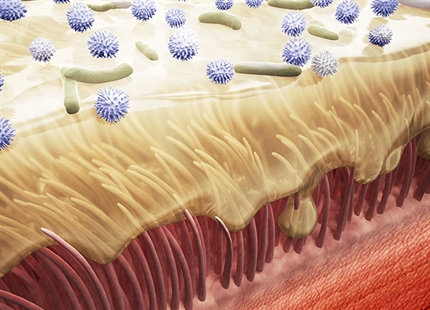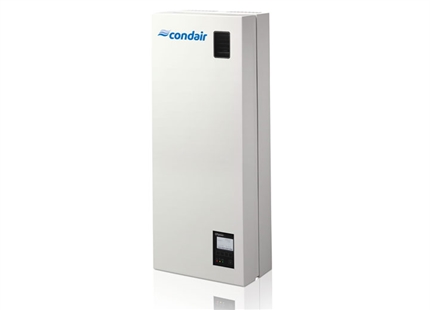
Home humidification & humidity control
In cold seasons when heating systems dry the internal atmosphere the air can often drop below 40% relative humidity (RH). At this level it will draw moisture from any available source. This includes our bodies, materials such as wood and textiles, our pets and even the fabric of our home itself. This will not just leave us feeling dehydrated but can have serious implications for our health.
Illness - The transmission of airborne viruses, such as influenza, is significantly reduced at a humidity above 40%RH. Also, the mucous in our nose and throat is our body's natural defence against airborne pollutants. When it dries our immune system is weakened.
Skin & hair - A dry atmosphere causes skin to become susceptible to cracking, especially on the hands, and can cause hair to develop split ends and become duller.
Wood - Floors, furniture and any other wooden objects can suffer dimensional changes and eventually crack in a dry atmosphere.
Dust - Humidity binds dust and causes it to precipitate out of the atmosphere so when the air is dry dust and airborne pollutants are more prevalent.
Pets - Dogs and cats will suffer from dry air in the same ways as humans but pets from tropical climates, such a parrots, can become very ill.
-
Humidity is a measure of the moisture content of air. Incorrect humidity levels can be detrimental to people or materials. Too high and it can cause problems of mould and condensation. Too low and it will dry out and damage objects and people, leaving us more susceptible to airborne viruses and infections. Understanding and maintaining your home's humidity at the correct level is important for protecting people, pets and possessions.
-
For human health and comfort, the ideal indoor humidity has been scientifically proven to be between 40-60%RH. It has been shown that this is the optimum level for the human respiratory immune system and is also the level that minimises the time viruses can remain airborne and infectious.
-
A hygrometer measures and shows air humidity in the same way that a thermometer measures and shows temperature. Hygrometers are relatively cheap to buy and are frequently sold as "thermohygrometers", which measure and display both temperature and humidity.
-
Continuous high indoor humidity, above 60%RH, can cause issues with damp, condensation and mould. The two solutions are either to heat the area, which will reduce the relative humidity, or to use a dehumidifier, which will physically remove moisture from the air.
-
A consistenly low indoor humidity, of below 40%RH, will promote respiratory infections and ill health. Using a humidifier will help you maintain an optimum indoor humidity. Most will incorporate a humidistat and control mechanism so you can set a specific humidity level. The humidifier will then monitor your home's atmosphere and introduce the precise volume of water needed to maintain your desired humidity level, without over-humidifying.
Things you should know about humidity in the home
- Opening windows won't help as cold air holds very little moisture. When it enters a house and is warmed, its relative humidity becomes very low.
- The ideal humidity for human health and comfort is between 40-60%RH.
- You can monitor the humidity in a room with a hygrometer. A humidistat controls a humidifier or dehumidifier in the same way a thermostat controls a heater or air conditioner.
- Breathing in dry air makes the uptake of oxygen and its subsequent transfer to the blood stream more difficult. Fatigue, tiredness and reduced concentration are symptoms of a reduced oxygen supply.
- A humidity of above 40%RH naturally dissipates electrostatic build-up.
Condair CP3 Mini low capacity electrode steam humidifier
Provides up to 4kg/hr of steam either directly to a room or into an air handling unit. Has concealed connections.

HEALTH PODCAST
Check out this podcast on how maintaining 40-60% relative humidity indoors is important in combatting the spread of viral infection.
You may also be interested in...

The science behind a healthy humidity

Dry air and our airway defence system

Dry air and airborne infection

